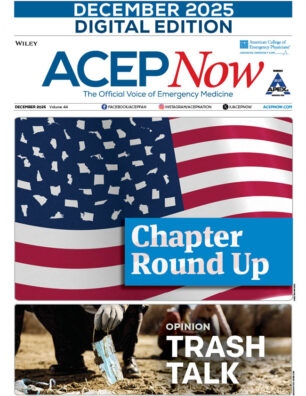People with high-deductible health insurance plans are less likely than those with low deductibles to visit the emergency department for chest pain, a U.S. study suggests.
Researchers followed 557,501 adults 19 to 63 years old for one year before and after their employers switched to high-deductible health plans, defined as at least $1,000 a year, as well as a control group of 5.86 million adults in the same age range with consistently low deductibles, defined as up to $500 a year. The main goal of the study was to assess population rates of index emergency department (ED) visits for chest pain, index ED visits followed by noninvasive cardiac testing within 3 and 30 days, coronary revascularization, and acute myocardial infarction hospitalization within 30 days.
The switch to a high-deductible was associated with a relative decrease of 4.3 percent, or -4.5 per 10,000 person-years in ED visits for nonspecific chest pain, and an 11.3 percent relative decrease in visits resulting in hospitalization. Most of the reduction in ED visits for nonspecific chest pain occurred in higher-poverty neighborhoods (-7.3 percent, -8.7 per 10,000 person-years), the authors note in Circulation.
Overall, researchers didn’t find an association between this transition to higher deductibles and noninvasive cardiac testing, revascularization procedures, or myocardial infarction admissions. However, there was a significant 29.4 percent increase in acute myocardial infarction hospitalizations within 30 days among patients from neighborhoods where at least 10 percent of residents lived below the federal poverty line.
“We were not that surprised as we do know from past studies that higher out-of-pocket costs make patients defer both unnecessary and necessary care,” said lead study author Dr. Shih-Chuan Chou, an instructor at Harvard Medical School and an emergency physician at Brigham and Women’s Hospital in Boston.
“Patients likely delay and defer chest pain visits and admissions much like deferring other services when prices increase,” Dr. Chou said by email.
It’s likely that the increase in admissions following an initial ED visit for nonspecific chest pain was caused by things that happened before patients ever reached the hospital, Dr. Chou said.
“We think this most likely represents a consequence of deferring care upstream to the ED visit – for example, decreased hypertension or cholesterol medication use – rather than deferred care after the ED visit,” Dr. Chou said.
One limitation of the study is that the authors lacked clinical data necessary to determine the ED visit severity. Because higher deductibles have previously been associated with a reduction in low-severity ED visits, however, it’s likely that people who presented with chest pain were higher acuity, the researchers point out.
Still, the results suggest that clinicians should ask patients about their financial stress from health care bills and consider this when advising patients to seek care, said Dr. Alexander Sandhu, an instructor in cardiovascular medicine at Stanford University in California and coauthor of an editorial accompanying the study.
“If clinically appropriate, clinicians should also inform these patients of less costly options for care than the ED, such as doctors’ offices and urgent care facilities,” Dr. Sandhu said by email. “To help patients make these decisions, clinicians need more ready access to information on how much care will cost, which is currently challenging to determine in advance.”
Pages: 1 2 | Multi-Page





No Responses to “High Deductibles Tied to Fewer ED Visits for Chest Pain, Higher Heart Attack Risk”